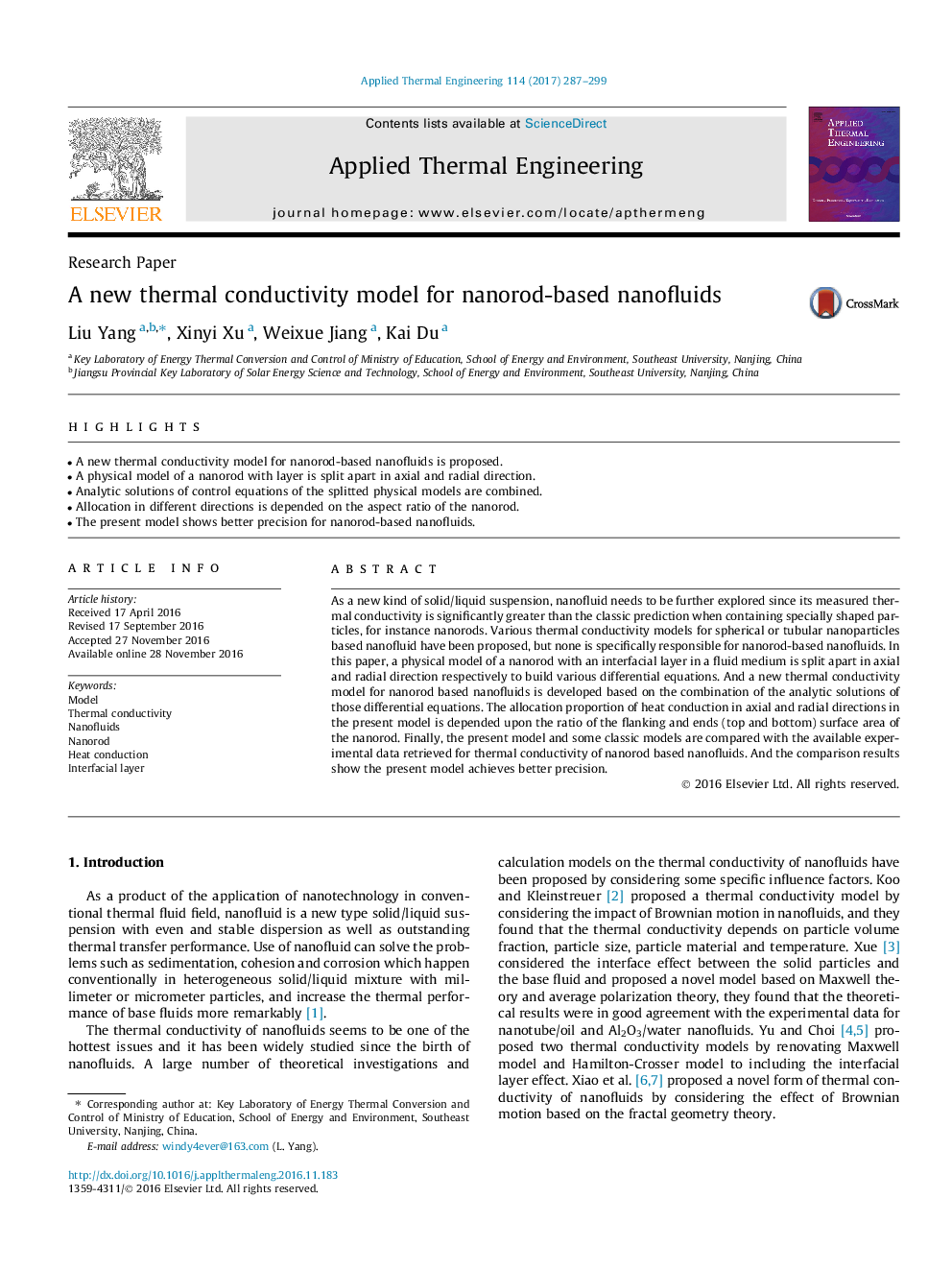| Article ID | Journal | Published Year | Pages | File Type |
|---|---|---|---|---|
| 4991957 | Applied Thermal Engineering | 2017 | 13 Pages |
Abstract
As a new kind of solid/liquid suspension, nanofluid needs to be further explored since its measured thermal conductivity is significantly greater than the classic prediction when containing specially shaped particles, for instance nanorods. Various thermal conductivity models for spherical or tubular nanoparticles based nanofluid have been proposed, but none is specifically responsible for nanorod-based nanofluids. In this paper, a physical model of a nanorod with an interfacial layer in a fluid medium is split apart in axial and radial direction respectively to build various differential equations. And a new thermal conductivity model for nanorod based nanofluids is developed based on the combination of the analytic solutions of those differential equations. The allocation proportion of heat conduction in axial and radial directions in the present model is depended upon the ratio of the flanking and ends (top and bottom) surface area of the nanorod. Finally, the present model and some classic models are compared with the available experimental data retrieved for thermal conductivity of nanorod based nanofluids. And the comparison results show the present model achieves better precision.
Related Topics
Physical Sciences and Engineering
Chemical Engineering
Fluid Flow and Transfer Processes
Authors
Liu Yang, Xinyi Xu, Weixue Jiang, Kai Du,
